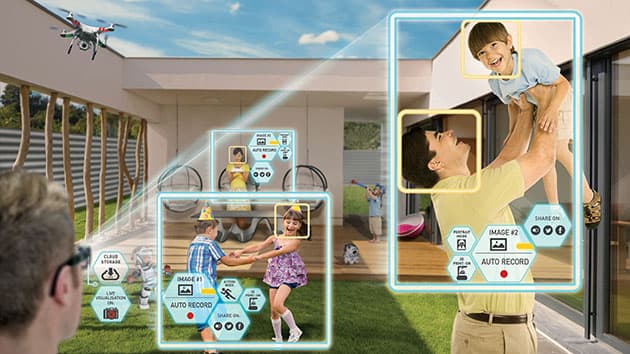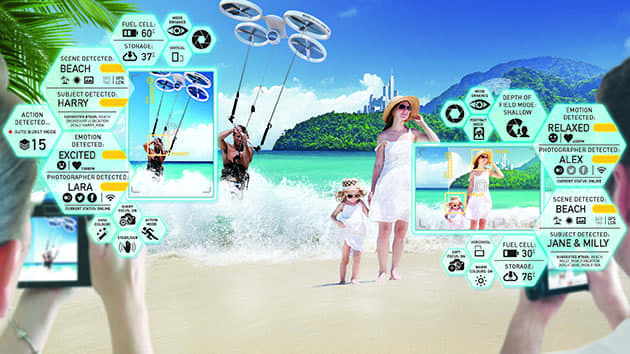Nikon says new sensory technology could change how we see and experience images, after it commissioned a report into the future of photography in the coming decades, and how these trends will ‘shape consumers’ day-to-day lives’.
Commenting on the findings of the Future of Imaging report, a Nikon spokesman said: ‘One of the key trends from the report was “contextualised cameras” and that we will see a new generation of sensor technologies that will enable future cameras to read the external ambience of a moment – the lighting, the sounds, the temperature – and match it to the internal emotion someone is trying to convey in an image.’
Such cameras, adds Nikon, ‘will adapt to the situation being photographed, by enhancing certain colours, tones, exposure and contrast levels to reflect and enhance the emotion of the image as the photographer intended’.
Furthermore, Nikon foresees a time when the image viewer will be able to hear what the subject of the image sounds like, feel textures of objects pictured and ‘a perfume is emitted from the device to enable them to smell the character of the message being conveyed’.
Research for the report was conducted by Future Laboratory.
In an interview with Amateur Photographer technical editor Andy Westlake, earlier this year, Frank Zuidweg, Coordinator Nikon Professional Services at Nikon Europe, explained more about the project.
‘They [Future Laboratory] spoke to many people inside and outside Nikon, to opinion leaders in photography and videography to see what would be the opportunities for the future.’
He added: ‘It’s a nice vision into the future… It doesn’t necessarily mean we will develop our products in those directions.
‘But it is interesting to know where the market is going and what the opportunities are.’
Commenting on the so-called ‘context cameras’, which read emotions and have sensor technology to read ambience, he explained:
‘This could be temperature… and a lot of other influences while taking the picture recorded by the camera.’
If it’s cold outside, image adopts ‘blue-ish cast’
Asked where such technology could be used, Zuidweg added: ‘You could think about, for instance, taking pictures outside.
‘When the temperature is very cold, the images get automatically updated with a bit of a blue-ish cast, so you could change colour or contrast of the results in the images depending on the circumstances while you’re recording.’
The idea, he said, is to adapt the image processing based upon sensor inputs within the camera.
‘You could think about adding certain colours. For example, if you go to a pub and have a beer, you may take some pictures, [but] you don’t want a completely neutral white balance that you will get.
‘You could think about cameras with more sensory images, which actually means it would be a multi-sensory experience, so it’s not only the image itself recorded, but it could also be the sound or it could be the smell while recording the image.
‘You would get tips of what to eat and drink while looking at the images.
‘One development could be live visualisation, which means devices for continuous recording and taking still images.’
Andy Millns, co-founder and creative director of augmented-reality technology company Inition, told Nikon:
‘People are already spending more time staring at a screen than they do looking at the real world.
‘When you have an experience that is 10 times more powerful than that screen, people will be compelled to invest an even more significant amount of their lives in there.’









